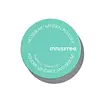What's inside
What's inside
 Key Ingredients
Key Ingredients

 Benefits
Benefits

 Concerns
Concerns

 Ingredients Side-by-side
Ingredients Side-by-side

Cyclopentasiloxane
EmollientDimethicone
EmollientDimethicone/Vinyl Dimethicone Crosspolymer
Skin ConditioningCyclohexasiloxane
EmollientSilica
AbrasivePolymethylsilsesquioxane
Dimethicone/PEG-10/15 Crosspolymer
Parfum
MaskingPolymethyl Methacrylate
Water
Skin ConditioningMineral Salts
Skin ConditioningTriethoxycaprylylsilane
Propanediol
SolventMentha Arvensis Leaf Extract
Masking1,2-Hexanediol
Skin ConditioningPhenoxyethanol
PreservativeOpuntia Coccinellifera Fruit Extract
Skin ConditioningAluminum Hydroxide
EmollientCI 77891
Cosmetic ColorantSodium Citrate
BufferingOrchid Extract
Skin ConditioningCamellia Sinensis Leaf Extract
AntimicrobialCI 77491
Cosmetic ColorantDiospyros Kaki Fruit Extract
Skin ConditioningCI 77492
Cosmetic ColorantCI 77499
Cosmetic ColorantCitrus Unshiu Peel Extract
MaskingEthylhexylglycerin
Skin ConditioningMica
Cosmetic ColorantCamellia Japonica Leaf Extract
Skin ConditioningTitanium Dioxide
Cosmetic ColorantLinalool
PerfumingButylene Glycol
HumectantLimonene
PerfumingTocopherol
AntioxidantDipropylene Glycol
HumectantCyclopentasiloxane, Dimethicone, Dimethicone/Vinyl Dimethicone Crosspolymer, Cyclohexasiloxane, Silica, Polymethylsilsesquioxane, Dimethicone/PEG-10/15 Crosspolymer, Parfum, Polymethyl Methacrylate, Water, Mineral Salts, Triethoxycaprylylsilane, Propanediol, Mentha Arvensis Leaf Extract, 1,2-Hexanediol, Phenoxyethanol, Opuntia Coccinellifera Fruit Extract, Aluminum Hydroxide, CI 77891, Sodium Citrate, Orchid Extract, Camellia Sinensis Leaf Extract, CI 77491, Diospyros Kaki Fruit Extract, CI 77492, CI 77499, Citrus Unshiu Peel Extract, Ethylhexylglycerin, Mica, Camellia Japonica Leaf Extract, Titanium Dioxide, Linalool, Butylene Glycol, Limonene, Tocopherol, Dipropylene Glycol
 Reviews
Reviews

Ingredients Explained
These ingredients are found in both products.
Ingredients higher up in an ingredient list are typically present in a larger amount.
Dimethicone is a type of synthetic silicone created from natural materials such as quartz.
What it does:
Dimethicone comes in different viscosities:
Depending on the viscosity, dimethicone has different properties.
Ingredients lists don't always show which type is used, so we recommend reaching out to the brand if you have questions about the viscosity.
This ingredient is unlikely to cause irritation because it does not get absorbed into skin. However, people with silicone allergies should be careful about using this ingredient.
Note: Dimethicone may contribute to pilling. This is because it is not oil or water soluble, so pilling may occur when layered with products. When mixed with heavy oils in a formula, the outcome is also quite greasy.
Learn more about DimethiconeThis ingredient is a silicone used to improve the texture of products and absorb oil. It does not get absorbed into the skin.
Like other silicones, Dimethicone/Vinyl Dimethicone Crosspolymer helps condition the skin by creating a barrier. In this sense, it can act as an emollient and trap moisture in.
This ingredient is a type of elastomer.
Learn more about Dimethicone/Vinyl Dimethicone CrosspolymerEthylhexylglycerin (we can't pronounce this either) is commonly used as a preservative and skin softener. It is derived from glyceryl.
You might see Ethylhexylglycerin often paired with other preservatives such as phenoxyethanol. Ethylhexylglycerin has been found to increase the effectiveness of these other preservatives.
Mica is a naturally occurring mineral used to add shimmer and color in cosmetics. It can also help improve the texture of a product or give it an opaque, white/silver color.
Serecite is the name for very fine but ragged grains of mica.
This ingredient is often coated with metal oxides like titanium dioxide. Trace amounts of heavy metals may be found in mica, but these metals are not harmful in our personal products.
Mica has been used since prehistoric times throughout the world. Ancient Egyptian, Indian, Greek, Roman, Aztec, and Chinese civilizations have used mica.
Learn more about MicaMineral Salts are salt (like the kind we eat) that contains minerals such as calcium or magnesium. Depending on the product, salt in skincare can be an abrasive, thickener, or preservative.
This ingredient may dry out the skin.
Silica, also known as silicon dioxide, is a naturally occurring mineral. It is used as a fine, spherical, and porous powder in cosmetics.
Though it has exfoliant properties, the function of silica varies depending on the product.
The unique structure of silica enhances the spreadability and adds smoothness, making it a great texture enhancer.
It is also used as an active carrier, emulsifier, and mattifier due to its ability to absorb excess oil.
In some products, tiny microneedles called spicules are made from silica or hydrolyzed sponge. When you rub them in, they lightly polish away dead skin layers and enhance the penetration of active ingredients.
Learn more about SilicaTocopherol (also known as Vitamin E) is a common antioxidant used to help protect the skin from free-radicals and strengthen the skin barrier. It's also fat soluble - this means our skin is great at absorbing it.
Vitamin E also helps keep your natural skin lipids healthy. Your lipid skin barrier naturally consists of lipids, ceramides, and fatty acids. Vitamin E offers extra protection for your skin’s lipid barrier, keeping your skin healthy and nourished.
Another benefit is a bit of UV protection. Vitamin E helps reduce the damage caused by UVB rays. (It should not replace your sunscreen). Combining it with Vitamin C can decrease sunburned cells and hyperpigmentation after UV exposure.
You might have noticed Vitamin E + C often paired together. This is because it is great at stabilizing Vitamin C. Using the two together helps increase the effectiveness of both ingredients.
There are often claims that Vitamin E can reduce/prevent scarring, but these claims haven't been confirmed by scientific research.
Learn more about Tocopherol